One of the most visible and devastating impacts of the state’s stay-at-home order to protect us from the human health crisis presented by COVID-19 has been mass layoffs. Over 26 million initial claims for unemployment insurance were filed across the nation in the first five weeks of the crisis. Here in Oregon about 333,700 initial claims were received in the first five weeks, roughly 16 percent of the statewide labor force.
During “normal” times we would typically not talk too much about unemployment insurance claims. Even during our last recession that began in 2008, the increase in unemployment insurance claims was relatively gradual. The rapid onset of the COVID-19 restrictions meant that our traditional economic indicators, such as total nonfarm employment or the unemployment rate could not immediately show the severity of this economic shock. That left us with the unemployment insurance claims data as one of the few indicators in the first weeks of the shock that could help us understand the magnitude of the crisis.
We now have five weeks of processed initial claims data, which is a large enough group for us to start to draw some conclusions about industries, areas, and populations most impacted at the onset of the crisis.
Let’s start with the regional distribution of these initial unemployment insurance claims. Not surprisingly the most populated counties have the largest number of initial unemployment insurance claims, with Multnomah (46,180 claims) and Washington County (43,930 claims) in the Portland Metro area topping the list of counties with the highest number of claims processed. However, we can see a clearer picture of the hardest hit counties by looking at the number of initial claims as a share of the total labor force. Here we see that counties with large accommodation and food service sectors and tourism destinations were the hardest hit. The number of initial claims processed in both Lincoln and Clatsop counties on the Oregon coast represented more than 15 percent of the labor force. Deschutes County accounted for the highest share of unemployment insurance claims processed of Oregon’s metropolitan counties, accounting for more than 12 percent of the Bend MSA labor force.
 The counties least impacted five weeks into the crisis are the least populated in the state. They are likely ranked so low due to proportionally smaller concentration of local employment in restaurants or other businesses directly impacted by the COVID-19 restrictions, including health services and retail trade.
The counties least impacted five weeks into the crisis are the least populated in the state. They are likely ranked so low due to proportionally smaller concentration of local employment in restaurants or other businesses directly impacted by the COVID-19 restrictions, including health services and retail trade.
As would be expected, accommodation and food services has been the hardest hit industry during the current crisis, with initial claims processed over the past five weeks representing roughly 29 percent of statewide employment in the industry. Arts, entertainment, and recreation was the next hardest hit as museums, ski resorts, zoos, and other recreation companies have closed or seen their operations significantly curtailed. Another hard hit industry is “other services,” which includes personal care services like fitness instructors, childcare workers, barbers/ stylists, massage therapists, and pet groomers.
 Perhaps more surprising has been the large number of initial unemployment insurance claims being processed in construction, health care, and manufacturing. These were industries that on first glance would seem more insulated from the initial COVID-19 restrictions. Health care posting large numbers of layoffs during a health crisis may seem puzzling; however, there are many health-related businesses that are not serving on the front lines of the COVID-19 response such as dentist offices, ambulatory health services, medical labs, and surgery centers. Many elective procedures are being postponed until the health crisis diminishes and there is less strain on the hospital system. Layoffs in construction and manufacturing are likely a result of an inability for many of these businesses to implement effective social distancing requirements. However, as this crisis continues, layoffs are increasingly due to a demand shock from less consumer spending. The one commonality among these hardest hit industries is an inability for many of the jobs to transition to work from home and the design of workplaces that makes social distancing difficult.
Perhaps more surprising has been the large number of initial unemployment insurance claims being processed in construction, health care, and manufacturing. These were industries that on first glance would seem more insulated from the initial COVID-19 restrictions. Health care posting large numbers of layoffs during a health crisis may seem puzzling; however, there are many health-related businesses that are not serving on the front lines of the COVID-19 response such as dentist offices, ambulatory health services, medical labs, and surgery centers. Many elective procedures are being postponed until the health crisis diminishes and there is less strain on the hospital system. Layoffs in construction and manufacturing are likely a result of an inability for many of these businesses to implement effective social distancing requirements. However, as this crisis continues, layoffs are increasingly due to a demand shock from less consumer spending. The one commonality among these hardest hit industries is an inability for many of the jobs to transition to work from home and the design of workplaces that makes social distancing difficult.
Although these COVID-related layoffs are spread across all industries it is becoming clear that the most vulnerable Oregonians are being impacted more significantly. Lower paying occupational groups posted notably higher shares of layoffs than higher paying occupational groups. The occupational groups with a median hourly rate of less than $20 an hour represent around 61 percent of total initial claims for unemployment insurance processed over the past five weeks. This represents a higher share than the 57 percent of statewide employment these lower paying occupations account for. Meanwhile, the highest paying occupational groups, those with a median hourly rate greater than $30, represent only 12 percent of initial claims processed, but 22 percent of total employment.
 When comparing the level of education for today’s unemployment insurance claimants compared with the educational attainment of the entire labor force, we see that those with lower levels of education have been hit particularly hard. This is likely a reflection of the industries that have been hardest hit, such as leisure and hospitality, construction, retail, and manufacturing that have a higher concentration of workers with a high school diploma or less. Around 58 percent of recent unemployment insurance claims were by individuals with a high school diploma or less, a significantly higher share than the 28 percent of the labor force they account for.
When comparing the level of education for today’s unemployment insurance claimants compared with the educational attainment of the entire labor force, we see that those with lower levels of education have been hit particularly hard. This is likely a reflection of the industries that have been hardest hit, such as leisure and hospitality, construction, retail, and manufacturing that have a higher concentration of workers with a high school diploma or less. Around 58 percent of recent unemployment insurance claims were by individuals with a high school diploma or less, a significantly higher share than the 28 percent of the labor force they account for.
 The age distribution of the unemployment insurance claimants is fairly typical of the labor force more broadly, with a few exceptions. Those ages 25 to 34 have been particularly hard hit. They accounted for roughly 30 percent of all unemployment insurance claimants in the past five weeks, but only 23 percent of the total labor force. This age group accounts for a larger share of the jobs in industries that were particularly hard hit. It could also be that this group represents workers earlier in their career and they were more susceptible to layoffs than higher level managers or supervisors. The youngest workers (ages 16 to 19) seem to be the least impacted, accounting for only 2 percent of total claimants. However, this is likely a reflection of lack of unemployment insurance coverage for these young workers who have fewer covered hours in the system.
The age distribution of the unemployment insurance claimants is fairly typical of the labor force more broadly, with a few exceptions. Those ages 25 to 34 have been particularly hard hit. They accounted for roughly 30 percent of all unemployment insurance claimants in the past five weeks, but only 23 percent of the total labor force. This age group accounts for a larger share of the jobs in industries that were particularly hard hit. It could also be that this group represents workers earlier in their career and they were more susceptible to layoffs than higher level managers or supervisors. The youngest workers (ages 16 to 19) seem to be the least impacted, accounting for only 2 percent of total claimants. However, this is likely a reflection of lack of unemployment insurance coverage for these young workers who have fewer covered hours in the system.
 This is a difficult time for many of us. In addition to the emotional toll this global pandemic is taking, many of our fellow Oregonians are also struggling with the economic realities of becoming unemployed. The Oregon Employment Department is here to serve in this time of need by administering unemployment insurance. Due to the record increase in claims, it is taking longer than usual for claims to be processed. The Unemployment Insurance Division is working as fast as they can to process every claim, and they continue to add staff. They ask that you continue to file weekly and you will be notified when your claim is processed. For additional information of unemployment insurance and updates regarding new federal programs go here.
This is a difficult time for many of us. In addition to the emotional toll this global pandemic is taking, many of our fellow Oregonians are also struggling with the economic realities of becoming unemployed. The Oregon Employment Department is here to serve in this time of need by administering unemployment insurance. Due to the record increase in claims, it is taking longer than usual for claims to be processed. The Unemployment Insurance Division is working as fast as they can to process every claim, and they continue to add staff. They ask that you continue to file weekly and you will be notified when your claim is processed. For additional information of unemployment insurance and updates regarding new federal programs go here.
Damon Runberg is a Regional Economist with the Oregon Employment Department. Reprinted by permission.

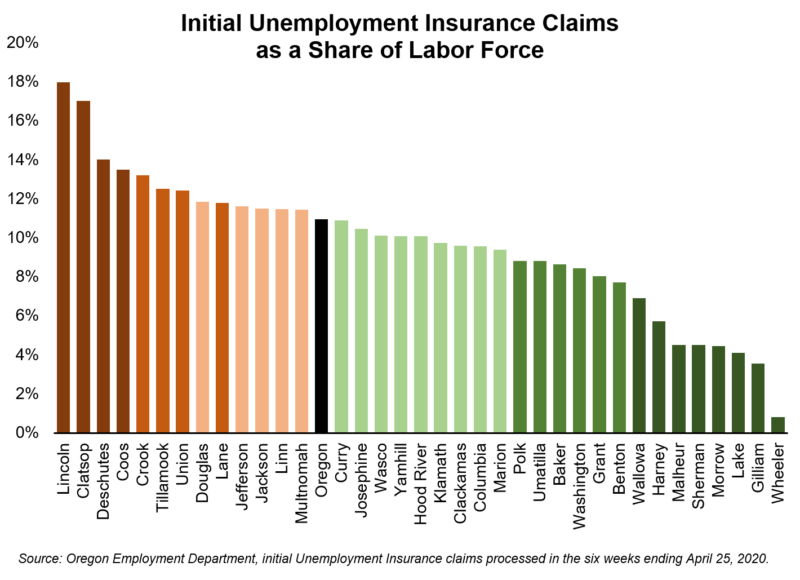
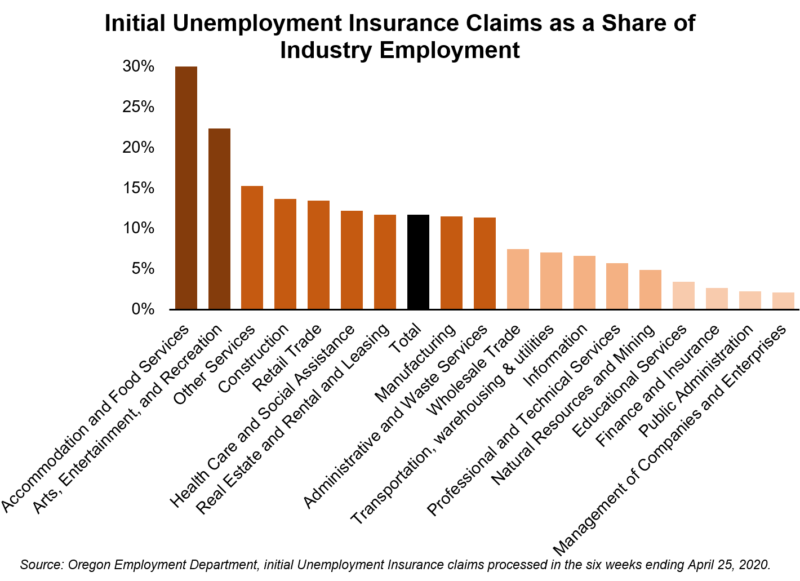
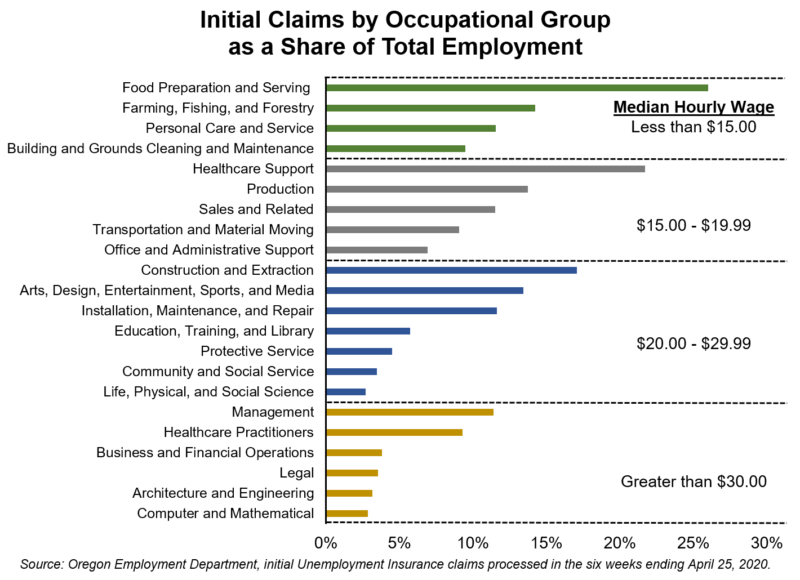
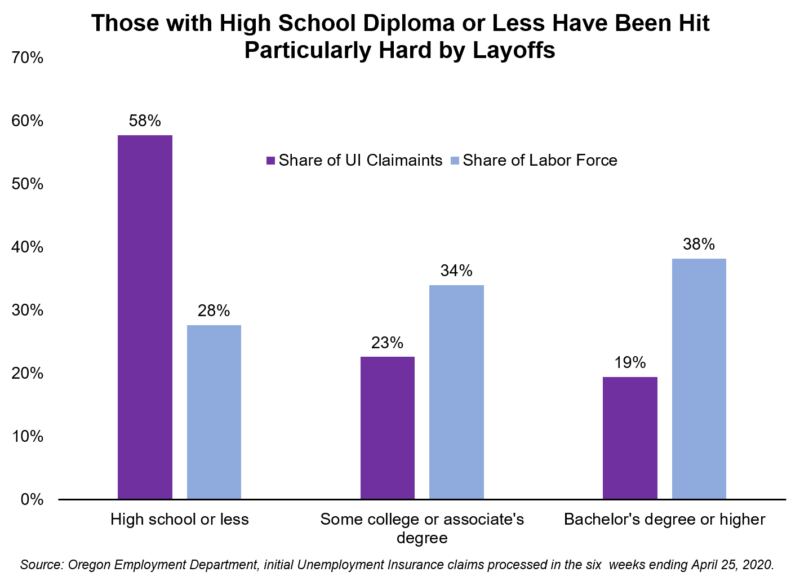
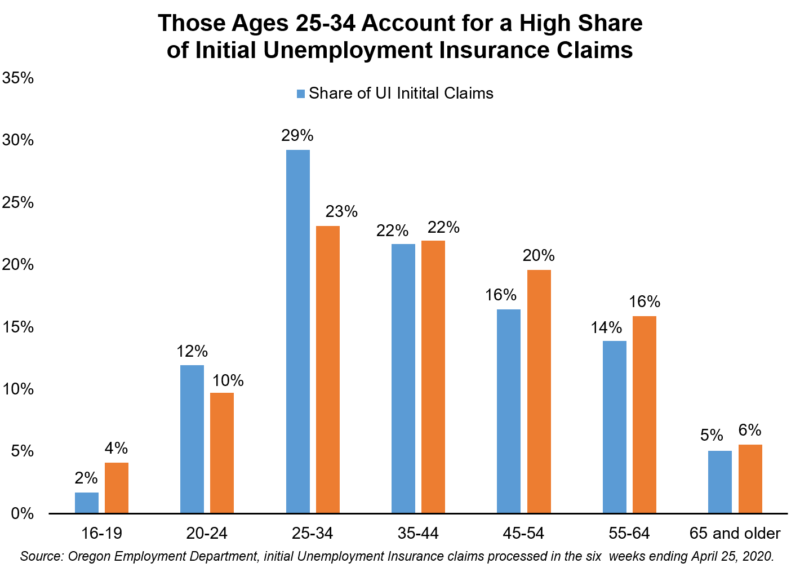








This was interesting, I don’t like seeing the county at the head of something negative, but, Lincoln County extends a long way south of Lincoln City, we are actually at the very north end of the county. Clearly,
the county has scores of tourist based jobs, food service, lodging and gift shops. Construction? I’m a tradesperson and haven’t been affected.
In fact where I live, they’re going full steam with the ridiculous subdivision they’ve been building in for the last 15 years, they’re certainly not using social distancing or even wearing protective gear for covid. Closing of some of the food services must be a choice by the operators, many are still open, but some which I expected to remain
open have shut down. My political comment- apparently Congress isn’t
an essential occupation. I think we could enjoy seeing some unemployment claims there.
Coast hit worst? Not a shock. Just another example of erroneous policies based on lies. Whats that Kate? “60,000 could die”…” “ flatten that curve”
“Stay home or you’ll kill everyone you love”..Really?
Lincoln county is the 2nd least virus effected county yet suffers the worst economic hit. Makes sense if your living in a police state, oh wait, we are.
Thanks Kate, Thanks County commissioners. You just signed us up for another month of lockdown while the rest of the nation goes back to work. After Covid-19 I’ll never feel safe again..from politicians.
CD,
You couldn’t be more right. Our county Bureaucrats should all be locked in a room with no food or water, stripping them of all freedoms. Then throw away the key. Maybe then, they would see the light and have a come to JESUS experience. And maybe then,
Our merciful God would unlock the door.
Did you see where Gov workers were on the graph? 2 percent
Guess what, laid off teachers are getting full pay while 100,000
Oregonians cant even get through to get their unemployment.
No wonder the folks in charge are in no hurry to end this insanity, they aren’t suffering.